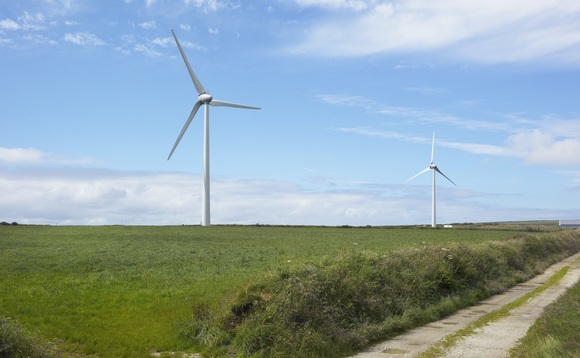Delabole wind farm in Cornwall, now owned by Good Energy, has generated 340GWh of electricity since it came online in 1991
Britain’s first ever commercial wind farm in Cornwall is celebrating 25 years of renewable electricity generation today, having produced more than 340GWh of power since it first came online in 1991, according to site owners Good Energy.
The Delabole wind farm’s birthday has been celebrated widely as a major milestone for the UK’s wind power sector, which has grown over the past quarter of a century to produce a record 12 per cent of the nation’s electricity in 2015.
There are now more than 1,000 commercial-scale UK wind energy projects operating onshore and offshore, meeting the annual electricity needs of over 9.5 million British homes.
Delabole alone has produced enough power to boil 3.4 billion kettles and cook more than 40 million Christmas turkeys in the past 25 years, Good Energy said, and in 2013 became the first wind farm in the UK to offer its own local tariff to nearby residents with the aim of cutting bills.
Juliet Davenport, chief executive of Good Energy, said turbine technology has come a long way since 1991, and described Delabole’s milestone as an “incredible achievement for the renewable industry”.
“The success of the wind farm has largely been down to the support of the local community who are the real custodians of this site,” said Davenport. “It’s thanks to them, and their belief in the project, that has helped make Delabole the perfect model for further wind power developments here in the UK.”
Located near the North Cornwall coast next to the village of Delabole, the wind farm was first developed by local farmers the Edwards family in response to plans to build a nuclear power station in the area, before later being bought by green electricity company Good Energy.
Peter Edwards said he had faced criticism for developing the wind farm at the time. “After the wind farm started generating in 1991, one of the main criticisms was that the amount we contributed to the National Grid was so insignificant that we shouldn’t have bothered,” said Edwards. “That’s why it’s so satisfying to see just how far wind energy has come and how it now competes with nuclear. As Bob Dylan once wrote ‘The answer, my friend, is blowing in the wind’.”
Between 2009 and 2011, Good Energy then invested £11.8m in the site, replacing the 10 existing turbines with four larger ones to more than double the total installed capacity of the site to 9.2MW. The wind farm now generates enough electricity to power around 6,200 homes each year, according to the Wiltshire-based firm.
Trade body RenewableUK’s executive director Emma Pinchbeck said wind power is now the cheapest way to generate new electricity, and compared the completion of the Delabole wind farm in 1991 to the invention of the World Wide Web, which also launched the same year.
“And just as the dawn of the internet has changed how we communicate, so renewables have revolutionised the way we generate electricity, replacing old technology with new,” said Pinchbeck. “Onshore and offshore wind is providing industrial-scale benefits to our modern economy, supporting tens of thousands of jobs, and attracting billions of pounds in investment to the UK, as the global energy market goes renewable.”
Delabole’s milestone was also hailed today by a number of green groups, including Friends of the Earth as well as chief scientist at Greenpeace, Doug Parr, who said the cutting edge Delabole project was a “wonderful symbol of the UK seizing the potential of our natural resources”.
“Onshore wind has become incredibly competitive and deserves more support, especially where communities actively back them,” said Parr. “It would really contribute to generating cheaper bills and new jobs in the future if onshore wind, solar and battery storage was given more backing.”


